Business fleets come in many shapes and sizes from two or three sedans to hundreds of commercial delivery trucks. But they all have one thing in common: they meet the essential transportation needs of the companies they serve.
When managed correctly, a fleet of vehicles can help you reduce expenses and improve the efficiency of your business. But if you don’t plan wisely, owning or leasing a fleet can have the opposite effect and will eat away at your bottom line through added ownership and maintenance costs.
Naturally, many business owners can be a little apprehensive about getting into fleet management.
To help educate you on the basics, we’ve reached out to an expert. David Dahn is the corporate fleet program manager for Erie Insurance. In his role, he’s responsible for purchasing and maintaining a massive fleet of vehicles that travel more than two million miles each month!
To help put your mind at ease, David has shared his answers to some of the most common questions business owners may have when starting their own fleet.
What Type of Vehicle Should I Choose for My Fleet?
When a business is considering owning a vehicle (or vehicles) for employees to drive, it’s important to consider how it will be used. By assessing the needs of your business, you can narrow down the type of vehicle you should be looking for:
- Transporting passengers: If you’ll be using your fleet vehicle to carry people (like offering a shuttle or taxi service), then you’ll probably want a minivan, full-size van or large SUV.
- Sales force: When an employee is using a fleet vehicle for personal travel to and from clients, a sedan, CUV or small SUV is the most economical option.
- Service: For jobs where an employee needs to transport tools and supplies (think plumbers and electricians), a full-size van or SUV typically fits the bill.
- Delivery: What you’re moving will help you narrow down the right vehicle type, which is likely to be a full-size van, light truck or cargo truck.
- Specialized service: If your work requires the use of industry-specific equipment, you’ll need a truck or full-size van that’s outfitted for the job. This could include adding a dump bed to a pickup truck or outfitting a van with shelving and ladder racks. (Learn more about what you should keep in mind when shopping for a pickup truck.)
What Vehicle-Specific Factors Should I Consider?
Once you decide on the type of vehicle, you’ll need to select a specific make, model and trim level. Here are some operational factors you should consider:
- Vehicle safety: The safety of your employees is an important consideration when choosing a fleet vehicle. You can view a vehicle’s government safety ratings on the National Highway Traffic Safety Administration (NHTSA) website. The Insurance Institute for Highway Safety (IIHS) is another great source for learning about which vehicles do the best job of protecting people in the most common kinds of crashes: front, side, rollover and rear.
- Fuel economy: The fuel efficiency of a vehicle will have a direct impact on your operating costs. But of course, the size of that impact will depend on how many miles your fleet travels each month. You can find a vehicle’s government fuel economy ratings on the manufacturer’s website or through the U.S. Department of Energy. Learn more about how to get better gas mileage.
- Terrain ability: Consider what kind of road conditions your employees will be traveling in. If they’ll frequently need to drive off-road or in snowy cold-weather climates, you may want to purchase a vehicle with all-wheel or four-wheel drive.
- Maintenance: Before choosing a vehicle, do some research on the manufacturer’s recommended maintenance schedules and take those costs into account. For example, you can run a fleet of sedans without paying for much more than oil changes, tires and brakes. But with larger vehicles and four-wheel drive trucks, parts will generally cost more and service intervals will be more frequent.
- Options: Once you settle on a make and model, you’ll need to choose an options package. This may not seem like a big deal, but it can have a huge impact on driver satisfaction. A car with heated leather seats will be a better place for your drivers to spend their days than a base-level vehicle with roll-up windows.
How Should I Pay for My Fleet Vehicles?
When it comes to deciding how to finance your fleet vehicles, there are several options—each of which have their own advantages:
- Buying: If you’re looking to buy a car, truck, van or an SUV that your business will own for the long haul, buying is a good option. It can also make sense if you have the capital to purchase the vehicle outright because you can avoid financing costs and recoup your investment when you sell the vehicle.
- Leasing: Leasing is a great option if you don’t have the operating capital to buy a vehicle. By signing a lease, you can get into a new car with a relatively low monthly payment. But remember that you’ll be responsible for any mileage overages or vehicle damage when the lease term ends.
- Renting: Short-term vehicle rentals are the most expensive option. However, depending on your circumstances, it could also be the best long-term financial move. For example, if you need a heavy-duty truck for a single job or for seasonal use, you can just rent it when you need it instead of paying for it year-round.
How Do I Get the Best Deal on a Fleet Vehicle?
For many business owners, the first thing they look at is the initial cost of purchasing the vehicle. But this approach can be shortsighted. To get the best value out of your fleet vehicle, it’s better to consider the total cost of ownership, also known as the “life cycle cost.” This includes:
- Purchase price: How much you pay to buy, lease or rent the vehicle.
- Maintenance costs: How much it costs to operate the vehicle over your ownership.
- Resale value: How much the vehicle will be worth when you decide to sell it.
By considering these factors, you may find that a more expensive vehicle will actually cost you less to operate because the cheaper car would require more maintenance and will have a lower resale value.
How Do I Compare Potential Fleet Vehicles?
As we outlined above, there are a lot of factors to consider when choosing a fleet vehicle. One mistake many people make is putting too much emphasis on one single criterion. A good way to avoid this is by using a vehicle selection matrix analysis.
This tool allows you to choose your own selection criteria and assign a rating of one (worst) to five (best) for each vehicle you’re considering. When you add up the scores, the vehicles with the highest totals should be at the top of your list.
For example:
How Long Should I Keep My Fleet Vehicle?
As a rule of thumb, it makes sense to sell a fleet vehicle after around 24 to 30 months, or 60,000 to 80,000 miles. This is the sweet spot for remarketing where you’ll recover the most money from selling the car.
During this period, maintenance will also be relatively low (usually limited to oil changes, a set of tires and brakes).
After that, you fall into what is called the “maintenance trough.” This is the period between 80,000 and 120,000 miles where you’ll need to invest a lot of extra money into repairs. If you keep a vehicle for that long, you might as well plan on using it for up to 200,000 miles.
Here’s another tip: resale values of fleet vehicles are often highest in early spring or fall.
What Should I Know About Insuring My Fleet?
Whether you rely on a single car or a large fleet of vehicles, commercial auto insurance is something most businesses need. That’s because an accident can happen to even the most careful driver—and these accidents can cost thousands or even millions of dollars.
Commercial vehicle insurance for both owned and leased cars and trucks protects your business in many important ways. ERIE offers coverage1 for:
- Liability if you’re responsible for harming others or for damaging their vehicles or property.
- Damages if your car is damaged or destroyed in an accident or by something other than an accident, such as theft, vandalism or hail.
- Uninsured/underinsured motorists if an at-fault driver is unable to pay any or all of the costs owed to you.
- Medical costs for you or your passengers’ injuries.
By working with a local ERIE agent, you can customize your policy to meet the specific needs of your business.
How Can I Encourage Safe Driving by My Employees?
For many businesses, the most dangerous part of the workday is the time employees spend in their vehicles. But fleets with active telematics programs experience up to 11 percent fewer losses from collisions, according to studies conducted by the Federal Motor Carrier Safety Administration.2
EnRoute®, ERIE’s commercial telematics program, makes it easy for business auto insurance customers to share their driving data and thereby potentially lower their business auto premiums and reduce driving risk.
EnRoute® uses driving and vehicle data from telematics devices to help business owners recognize how choices—such as routes, driver actions and the types of vehicles driven—affect driving performance and safety. The program works with more than 40 telematics service providers and nearly a dozen telematics-enabled vehicle manufacturers.
If you don’t have telematics devices on your vehicles and you’re interested in this technology, ERIE provides telematics devices at no charge to you. Talk to your local ERIE agent to see if your business is eligible.
Are There Any Other Factors I Should Consider?
Here are a few more things to keep in mind as you begin to build your own business fleet:
- Personal use: Consider whether you will let an employee use your fleet vehicle for personal use. This can make sense if you’re providing a car for a traveling salesperson or remote worker. But it can also be considered taxable income by the IRS so do your homework in advance.
- Branding: Branded vehicle wraps are a great way to advertise your business. But many employees who use a fleet vehicle for personal use don’t want to travel in a rolling billboard. Generally speaking, branded vehicles are a better option for strictly corporate use.
- Driver requirements: A commercial driver’s license is required for vehicles with a gross combined weight rating (GCWR) of 26,001 or more pounds. But your state may have additional license requirements for smaller vehicles weighing more than 10,000 pounds.
- Inspections: Your required fleet inspections will depend on the types of vehicles you operate and where you drive them. Cars and SUVs may only need an annual state inspection. Trucks may need to be inspected twice a year, and mounted equipment could require quarterly inspections. If you’re only driving within your state, you’ll deal solely with state regulations. However, if you are traveling interstate or are operating large commercial vehicles, you’ll need to comply with federal Department of Transportation (DOT) guidelines.
- Fleet management: Managing a few vehicles is something most business owners can handle on their own. But if you’re building a fleet of several dozen vehicles or more, consider working with a fleet management company or a major leasing company. These firms can arm you with the advice and data you need to effectively manage your fleet. They can also provide added benefits such as safety programs and driver monitoring services which may also lower your insurance rates.
Looking After You
Whether you’re managing a fleet of 2 or 200, ERIE will always be there to help protect you and your business. To learn more about our business auto insurance, or to get a free no-obligation quote, contact a local ERIE agent in your neighborhood.
1See individual policies for specific coverage details. Certain terms and limitations may apply. Refer to our disclaimer for additional information.
2 Source: Study of the Impact of Telematics Systems on Safe and Fuel-Efficient Driving in Trucks (2014) and Evaluating the Potential Safety Benefits of Electronic Logging Devices (2014), Federal Motor Carrier Safety Administration.







